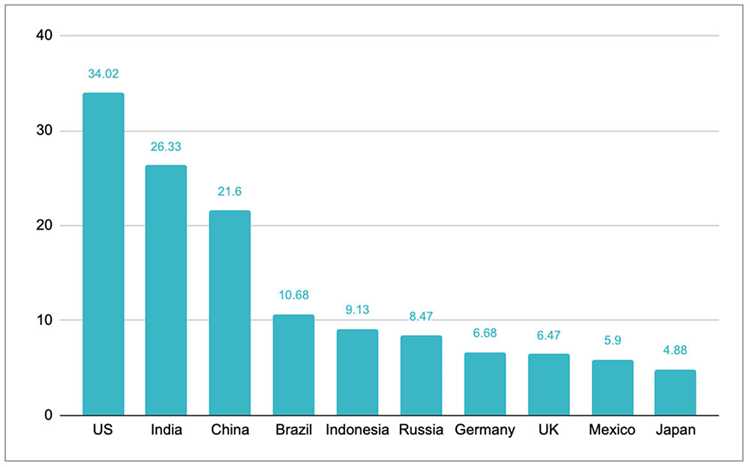
Plastic has become an integral part of modern society, with its versatility and convenience revolutionizing various industries. However, this widespread use of plastic comes at a cost, as it poses a significant threat to our environment. It is essential to identify the countries that contribute the most to plastic consumption, as this knowledge can help us develop targeted strategies to reduce plastic waste and promote sustainable practices.
When it comes to plastic consumption, several countries stand out as the top offenders. These countries not only have high population numbers but also have economies heavily reliant on industries that generate substantial plastic waste. Understanding the plastic consumption patterns of these countries can shed light on the underlying factors driving plastic pollution and help us find effective solutions.
One of the leading plastic-consuming countries is China. With its massive population and rapid industrialization, China has become the largest producer and consumer of plastic in the world. The country’s booming manufacturing sector and high demand for consumer goods have contributed to a significant increase in plastic consumption over the years. As a result, China faces immense challenges in managing and recycling its plastic waste, leading to alarming environmental consequences.
Another major player in plastic consumption is the United States. As one of the most developed and consumer-driven countries, the United States has a massive appetite for plastic products. From packaging materials to single-use items, plastic has become deeply ingrained in American culture and lifestyle. The country’s extensive use of plastic, coupled with a lack of effective recycling infrastructure, has made it a significant contributor to the global plastic waste crisis.
- Top Plastic-Consuming Countries
- United States
- China
- United States: Leading the Plastic Consumption
- China: A Growing Plastic Consumption Trend
- India: Balancing Economic Growth and Plastic Waste
- Indonesia: A Major Contributor to Plastic Pollution
- Brazil: Plastic Consumption on the Rise
- Russia: Plastic Consumption Challenges and Solutions
- The Impact of Plastic Consumption
- Solutions to Reduce Plastic Consumption
- Question-answer:
- Which country consumes the most plastic?
- What are the consequences of plastic consumption?
- How does plastic consumption affect the environment?
- What are some measures that countries are taking to address plastic consumption?
- How can individuals reduce their plastic consumption?
- Which country is the top consumer of plastic?
- What are the other top plastic-consuming countries?
Top Plastic-Consuming Countries
Plastic consumption is a pressing issue in today’s world, as it has detrimental effects on the environment and human health. Several countries have emerged as top plastic consumers, contributing to the global plastic waste crisis. These countries not only have high plastic consumption rates but also struggle with proper waste management and recycling practices.
United States
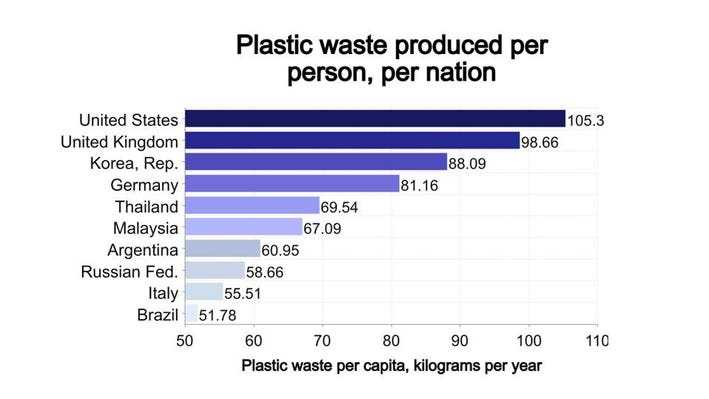
The United States is one of the top plastic-consuming countries, with a significant portion of its population relying heavily on single-use plastic products, such as plastic bags and water bottles. The convenience and affordability of plastic have contributed to its widespread use, leading to massive plastic waste generation.
China
China, known for its large population and rapid economic growth, is also a major contributor to plastic consumption. The demand for plastic products has surged in recent decades due to urbanization and changing lifestyles. Despite recent efforts to curb plastic waste, China still faces challenges in managing its plastic consumption and waste.
Other countries such as Germany, Brazil, and Indonesia are also among the top plastic consumers, with each facing unique challenges in tackling plastic waste. The growing awareness of the adverse effects of plastic consumption has prompted governments, businesses, and individuals worldwide to take action.
Efforts to reduce plastic consumption and promote sustainable alternatives, such as reusable bags and bottles, have gained momentum. Additionally, waste management systems and recycling facilities are being improved to handle the growing plastic waste problem.
While the top plastic-consuming countries have a long way to go in combating plastic waste, international cooperation and individual responsibility can make a significant difference in tackling this global issue. By reducing plastic consumption and promoting sustainable practices, we can work towards a cleaner and greener future.
United States: Leading the Plastic Consumption
The United States is one of the leading countries in the world when it comes to plastic consumption. With a population of over 330 million people, it is no surprise that the United States produces a vast amount of plastic waste. In fact, the country generates around 40 million tons of plastic waste every year.
Plastic consumption in the United States is fueled by a number of factors. One of the main reasons is the country’s high standard of living and consumer culture. Americans use plastic in various aspects of their daily lives, from packaging and disposable products to electronics and automobiles.
The convenience and affordability of plastics have also contributed to its widespread use in the United States. Plastic is lightweight, versatile, and can be manufactured at a low cost. This makes it an attractive choice for many industries and consumers.
However, plastic consumption in the United States comes with significant environmental consequences. The country has struggled to effectively manage its plastic waste, leading to pollution of land, waterways, and oceans. Plastic waste also poses a threat to wildlife, as animals often mistake it for food or become entangled in it.
The United States has taken some steps to address its plastic consumption and waste management issues. Various cities and states have implemented bans or restrictions on single-use plastics, such as plastic bags and straws. The federal government has also introduced legislation and initiatives aimed at reducing plastic waste and encouraging recycling.
However, more needs to be done to address the excessive plastic consumption in the United States. Education and awareness campaigns, as well as investment in alternative materials and recycling infrastructure, are necessary to mitigate the environmental impact of plastic waste.
Overall, the United States remains a global leader in plastic consumption, but efforts are being made to reduce its reliance on plastics and find more sustainable alternatives.
China: A Growing Plastic Consumption Trend
China, one of the world’s most populous countries, has experienced a significant increase in plastic consumption in recent years. This upward trend can be attributed to several factors.
Firstly, China’s rapid economic growth has led to an increase in disposable income among its population. As a result, people have more purchasing power and are buying more products, many of which are packaged in plastic.
Secondly, the country’s manufacturing industry has expanded exponentially, leading to a higher demand for plastic raw materials. China is known as the “world’s factory,” producing and exporting a wide range of plastic goods.
The rise of e-commerce has also contributed to the surge in plastic consumption in China. Online shopping has become increasingly popular, with more and more products being shipped in plastic packaging.
Furthermore, China’s waste management infrastructure has struggled to keep up with the growing plastic consumption. The country has faced challenges in effectively recycling and disposing of plastic waste, leading to a significant amount of plastic ending up in landfills or polluting the environment.
Recognizing the environmental impact of plastic consumption, China has recently implemented measures to address the issue. The government has imposed restrictions on single-use plastic bags and is encouraging the use of biodegradable alternatives.
Efforts are also being made to improve recycling infrastructure and promote sustainable practices. However, changing consumer behavior and reducing plastic consumption remains a significant challenge in China.
In conclusion, China’s growing plastic consumption trend can be attributed to its economic growth, manufacturing industry, e-commerce boom, and inadequate waste management infrastructure. To combat the environmental impact of plastic, the country is taking steps towards reducing plastic waste and promoting sustainable alternatives.
India: Balancing Economic Growth and Plastic Waste
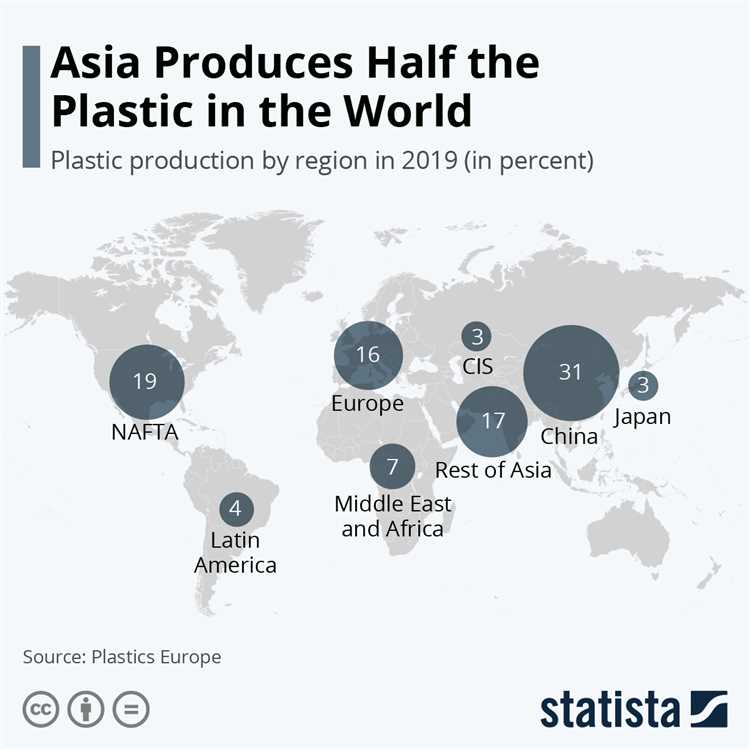
India, with its rapidly expanding economy and population, faces significant challenges when it comes to plastic waste management. As one of the top plastic-consumers in the world, India is struggling to find a balance between economic growth and environmental sustainability.
Plastic consumption in India has been on the rise due to various factors such as urbanization, increased disposable incomes, and changes in lifestyle. This has led to a surge in plastic waste generation, with inadequate infrastructure and policies in place to effectively manage and recycle it.
The Indian government has recognized the urgency of the plastic waste problem and has taken steps to address it. In 2016, the government launched the Swachh Bharat Abhiyan (Clean India Mission), a national cleanliness campaign that includes efforts to reduce plastic waste. Additionally, the government has implemented a ban on certain single-use plastics and has introduced initiatives to promote the use of alternative materials.
However, implementing and enforcing these measures has proven to be a challenge. India’s vast informal sector plays a significant role in the country’s waste management system, with many waste pickers relying on plastic waste for their livelihoods. Balancing the need to protect the environment with the need to provide employment opportunities and support sustainable livelihoods is a complex task.
Efforts are being made to improve waste management infrastructure and promote recycling in India. The government is investing in the development of waste-to-energy plants and waste segregation facilities. Additionally, NGOs and grassroots organizations are working towards raising awareness and implementing community-led waste management initiatives.
| Challenges | Solutions |
|---|---|
| Lack of sufficient waste management infrastructure | Investing in the development of waste-to-energy plants and waste segregation facilities |
| Inadequate policies and enforcement | Implementing and enforcing bans on single-use plastics, promoting the use of alternative materials |
| Balancing economic growth with environmental sustainability | Supporting initiatives that provide employment opportunities and promote sustainable livelihoods |
India’s journey towards achieving a balance between economic growth and plastic waste management is ongoing. The government, civil society, and individuals all have a role to play in addressing this pressing issue. By working together, India can strive towards sustainable development and a cleaner, greener future.
Indonesia: A Major Contributor to Plastic Pollution
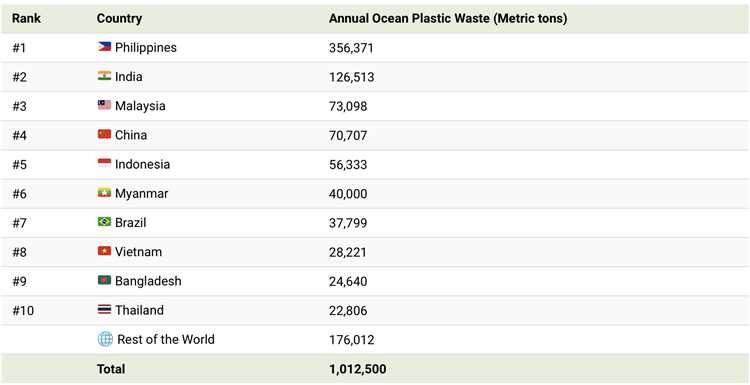
Indonesia is a country located in Southeast Asia that has gained recognition as one of the world’s largest contributors to plastic pollution. With a population of over 270 million people, it comes as no surprise that the country generates a significant amount of plastic waste.
The main factors contributing to Indonesia’s plastic pollution problem are its rapid industrialization, urbanization, and inadequate waste management infrastructure. As more and more people move to urban areas and consume disposable plastic products, the volume of plastic waste continues to grow at an alarming rate.
One of the primary issues in Indonesia is the lack of proper waste collection and recycling facilities. According to some reports, only about 10% of plastic waste in the country is recycled, while the rest ends up in landfills, rivers, and oceans. This not only poses a threat to marine life but also contributes to air and water pollution, affecting the overall ecosystem and public health.
Another challenge is the prevalent use of single-use plastics, such as plastic bags and food packaging. These items are widely used due to their convenience and affordability but have a devastating impact on the environment. Efforts are being made to reduce plastic consumption, such as the implementation of a plastic bag tax and the promotion of reusable bags.
The Indonesian government has recognized the severity of the plastic pollution problem and has taken steps to address it. In 2018, President Joko Widodo pledged to reduce Indonesia’s marine plastic waste by 70% by 2025. This commitment includes improving waste management infrastructure, increasing public awareness, and promoting sustainable alternatives to single-use plastics.
However, achieving these targets will require a collective effort from the government, industries, and individuals. It is crucial for stakeholders to work together to develop effective waste management systems, support recycling initiatives, and promote sustainable practices. Only through a comprehensive approach can Indonesia tackle its plastic pollution problem and contribute to a cleaner and healthier environment for future generations.
Brazil: Plastic Consumption on the Rise
Brazil, the largest country in South America, has seen a significant increase in plastic consumption in recent years. The rapid economic growth and urbanization have led to a surge in the use of plastic products in various sectors, including packaging, construction, and consumer goods.
Plastic has become an integral part of the daily lives of Brazilians, with single-use plastic items being widely used and disposed of without proper recycling or waste management. This has resulted in a major environmental challenge, as plastic waste is polluting Brazil’s land, rivers, and oceans.
The rise in plastic consumption can be attributed to several factors. Firstly, the population growth and changing lifestyles have led to an increased demand for convenience and packaged products. As a result, the use of plastic packaging has skyrocketed, contributing to the overall plastic consumption.
In addition, Brazil’s booming e-commerce industry has also played a significant role in the rise of plastic consumption. With online shopping becoming more popular, there has been a surge in the use of plastic packaging materials to ensure the safe delivery of products.
Furthermore, the lack of awareness and infrastructure for proper plastic waste management has exacerbated the problem. Brazil still lacks efficient recycling systems, and most plastic waste ends up in landfills or is improperly disposed of, leading to environmental pollution.
To address the growing plastic consumption and its environmental impact, Brazil has taken some steps towards sustainability. The government has implemented policies to promote recycling and reduce plastic waste. Companies are also being encouraged to adopt eco-friendly practices and use alternative materials to plastic.
However, more efforts are needed to tackle the plastic consumption issue effectively. Public awareness campaigns, stricter regulations, and improved waste management infrastructure are crucial to minimizing plastic waste in Brazil and preserving its natural resources.
In conclusion, Brazil’s plastic consumption is on the rise due to population growth, changing lifestyles, and the booming e-commerce industry. This trend poses a significant environmental challenge, requiring a collective effort to reduce plastic waste and promote sustainable practices.
Russia: Plastic Consumption Challenges and Solutions
Russia is one of the top plastic-consuming countries in the world, facing numerous challenges in managing its plastic waste. As the largest country by land area, Russia has a vast territory to cover in terms of waste collection and recycling infrastructure. This poses a significant challenge, as it requires extensive investment and coordination efforts to establish an effective waste management system.
The Impact of Plastic Consumption
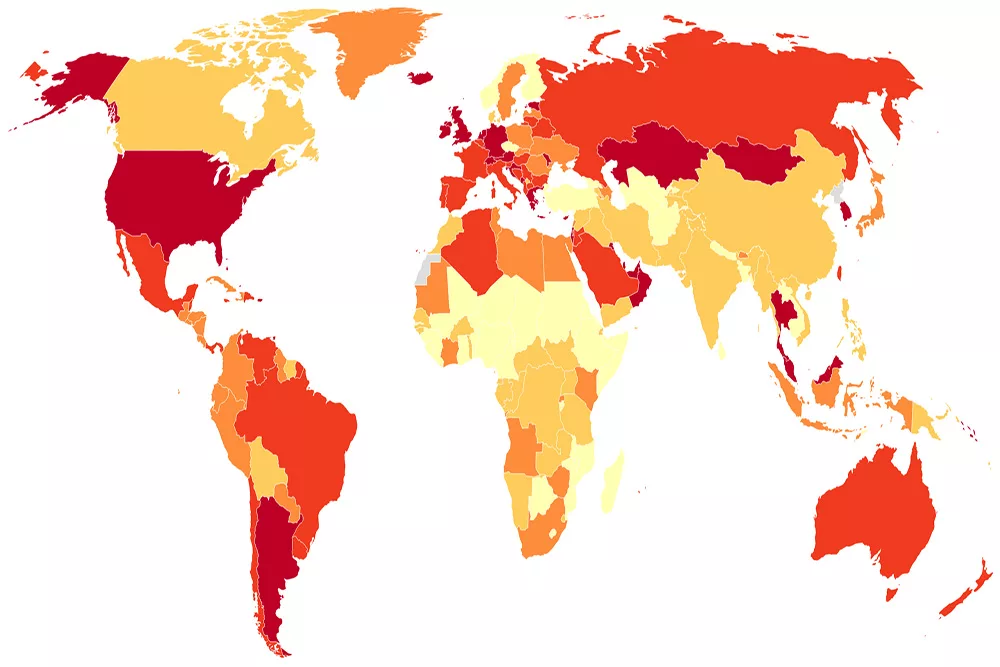
The high levels of plastic consumption in Russia have detrimental effects on the environment. Plastic waste often ends up in landfills or is improperly disposed of, leading to pollution of water bodies, soil, and air. This pollution poses a threat to the rich biodiversity of Russia’s ecosystems and harms wildlife. The long decomposition time of plastic also means that its negative impact on the environment persists for years.
Moreover, plastic consumption contributes to greenhouse gas emissions during its production and disposal. This further exacerbates the challenges of climate change that Russia is already facing, such as melting permafrost and rising temperatures in the Arctic region.
Solutions to Reduce Plastic Consumption
In recent years, Russia has taken steps to address the issue of plastic consumption and waste management. The government has introduced legislation to promote recycling and reduce plastic waste. This includes implementing extended producer responsibility programs, which require producers to take responsibility for the entire lifecycle of their products, including their disposal. The ban on single-use plastics, such as bags and straws, has also been proposed to reduce plastic consumption.
Furthermore, there is a growing awareness among Russian citizens about the need to reduce plastic consumption and adopt sustainable practices. Many individuals and organizations are actively promoting the use of reusable items, such as bags and bottles, as well as advocating for better waste management practices.
However, more efforts are needed to tackle the challenges of plastic consumption in Russia effectively. This includes improving waste collection and recycling infrastructure, investing in innovative technologies for plastic recycling, and educating the public about the importance of reducing plastic consumption.
In conclusion, plastic consumption in Russia poses significant challenges for the environment and requires comprehensive solutions. Through the joint efforts of the government, businesses, and individuals, Russia can make progress in reducing its plastic consumption and protecting its natural resources for future generations.
Question-answer:
Which country consumes the most plastic?
The United States consumes the most plastic, with an estimated 38 million tons of plastic waste generated in 2019.
What are the consequences of plastic consumption?
Plastic consumption has a range of negative consequences, including environmental pollution, harm to wildlife, and health risks for humans.
How does plastic consumption affect the environment?
Plastic consumption leads to environmental pollution as plastic waste takes hundreds of years to decompose and often ends up in landfills, oceans, and other ecosystems.
What are some measures that countries are taking to address plastic consumption?
Countries are taking various measures to address plastic consumption, such as banning single-use plastics, implementing recycling programs, and promoting the use of sustainable alternatives.
How can individuals reduce their plastic consumption?
Individuals can reduce their plastic consumption by using reusable bags and water bottles, avoiding single-use plastics, recycling, and supporting businesses that use sustainable packaging.
Which country is the top consumer of plastic?
According to a recent study, China is currently the top consumer of plastic in the world. It accounts for about 28% of the global plastic consumption.
What are the other top plastic-consuming countries?
After China, the United States is the second-largest consumer of plastic, accounting for about 18% of the global plastic consumption. Other top plastic-consuming countries include Germany, Brazil, and Japan.